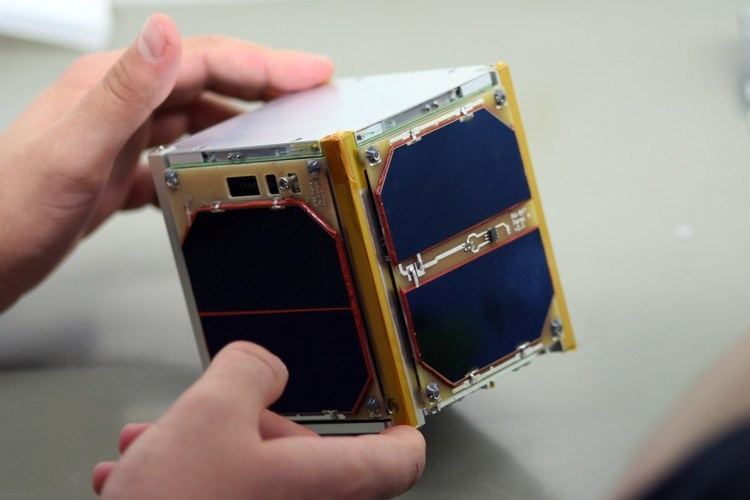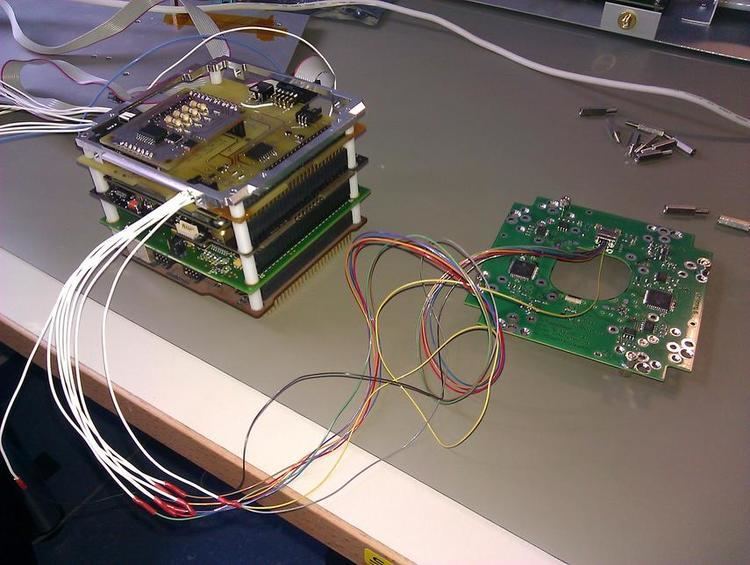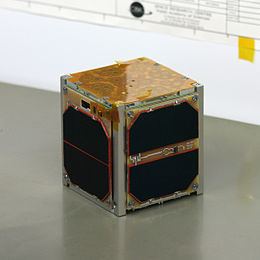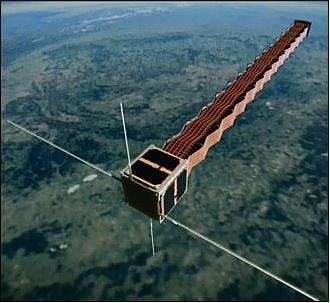Mission type Technology SATCAT no. 38083 Inclination 69.47° Launch mass 1,000 g | COSPAR ID 2012-006G Mission duration 1 year Inclination 69.47° Period 1.6 hours Launch mass 1,000 g | |
 | ||
Manufacturer Warsaw University of Technology (Faculty of Power and Aeronautical Engineering of Warsaw University of Technology) Similar Goliat, Xatcobeo, MaSat‑1, ALMASat‑1, Lem | ||
Pw sat the first polish satellite
PW-Sat is a series of satellites that includes the first Polish artificial satellite which was launched 13 February 2012 from ELA-1 at Guiana Space Centre aboard Italian-built Vega launch vehicle during its maiden voyage. PW-Sat1's mission was to test experimental elastic solar cells, as well as an orbital decay technology consisting of a "tail" designed to speed re-entry. It was expected to last for 1 year.
Contents

PW-Sat1 was a type of CubeSat satellite constructed by the Faculty of Power and Aeronautical Engineering of Warsaw University of Technology in cooperation with the Space Research Centre of the Polish Academy of Sciences.

Pw sat the first polish satellite
History

The PW-Sat project was created in 2004 when group of students from Warsaw University of Technology decided to build satellite compatible with CubeSat 1U standard. Initially planned for a 2007 launch, delays in the development of the Vega caused the mission to be postponed until 2012. The cost of the project is estimated to be 200,000 Polish zloty (63,205 USD), with funding coming from the university's budget, as well as from an agreement between Poland and the European Space Agency.
Hardware
PW-Sat1 was a 10x10x10 cm cube with a mass of 1 kg. It is equipped with the following hardware:

Mission
PW-Sat1 was launched on 13 February 2012, 10:00 UTC from ELA-1 at Guiana Space Centre (Kourou, French Guiana) aboard the maiden flight of the Vega rocket, together with LARES and ALMASat-1 satellites and 6 other CubeSats built by various European universities. It was deployed 1 hour 10 minutes into the flight from the P-POD-2 container, along with the ROBUSTA and MaSat-1 CubeSats.
First signals from satellite were received around 12:10 UTC by radio amateurs. The first Polish reception of PW-Sat1's signals came at 12:15 UTC by CAMK in Warsaw.
PW-Sat1 was planned stay in orbit until 2013, when it was planned to perform a destructive atmospheric reentry. The satellite used a large amount of the batteries' stored energy while performing tasks early in the mission. This battery depletion, combined with orbital maneuvers designed so the satellite would fly over Poland, delayed deployment of the tail. Commands of tail deployment were sent from Earth on April and May 2012, but PW-Sat did not respond to the commands. Due to a hardware issue with the communication module (that was discovered on a few other cube sats using the same model) communication with the satellite was problematic and the tail couldn't be extended.
PW-Sat1 reentered the atmosphere on 28 October 2014.
Development of a successor, PW-Sat2, begun in September 2013 with launch planned for 2017.
